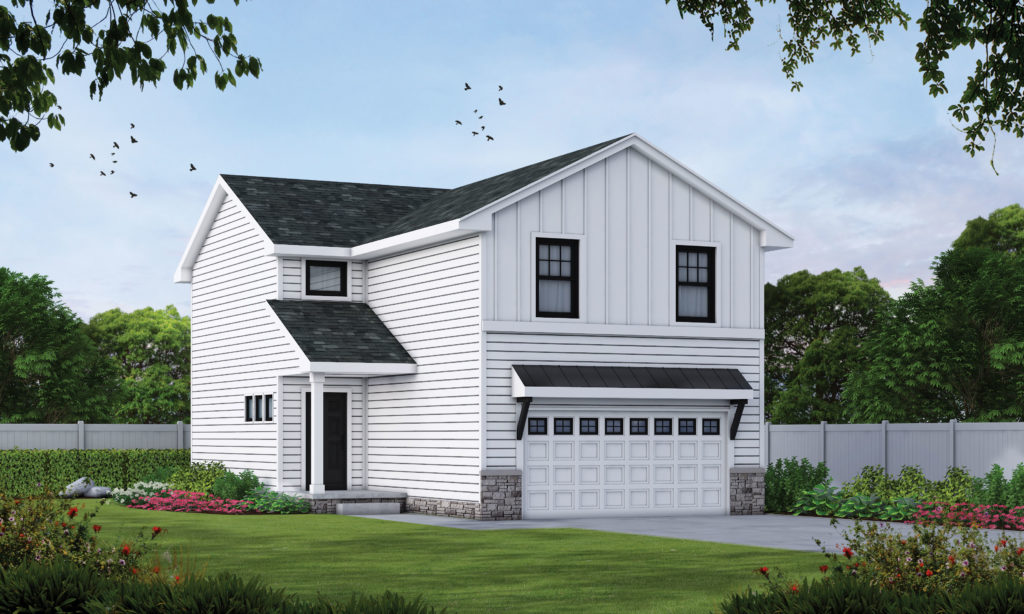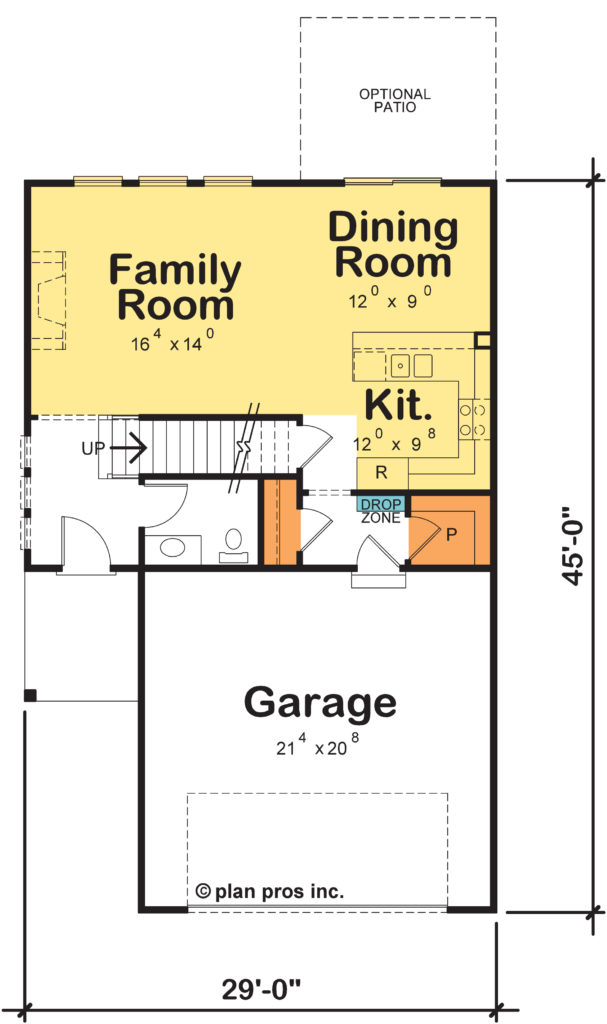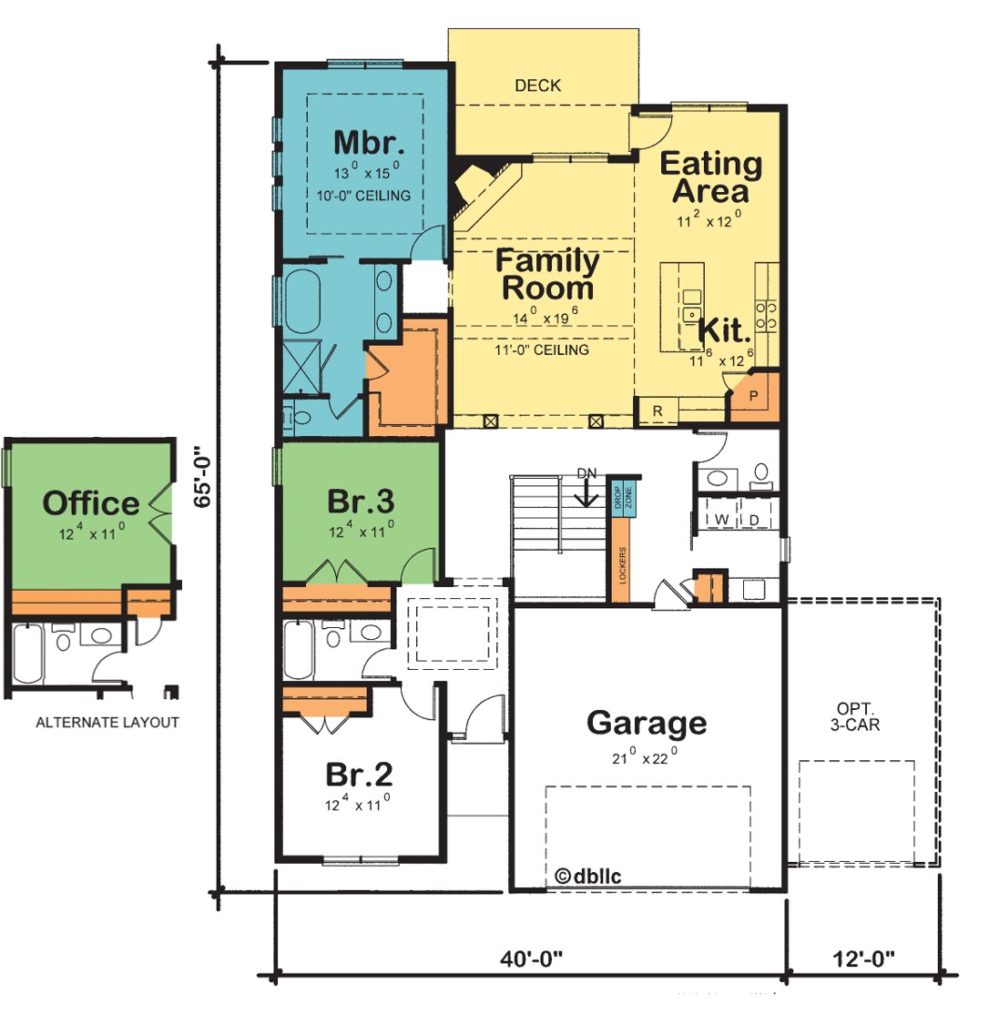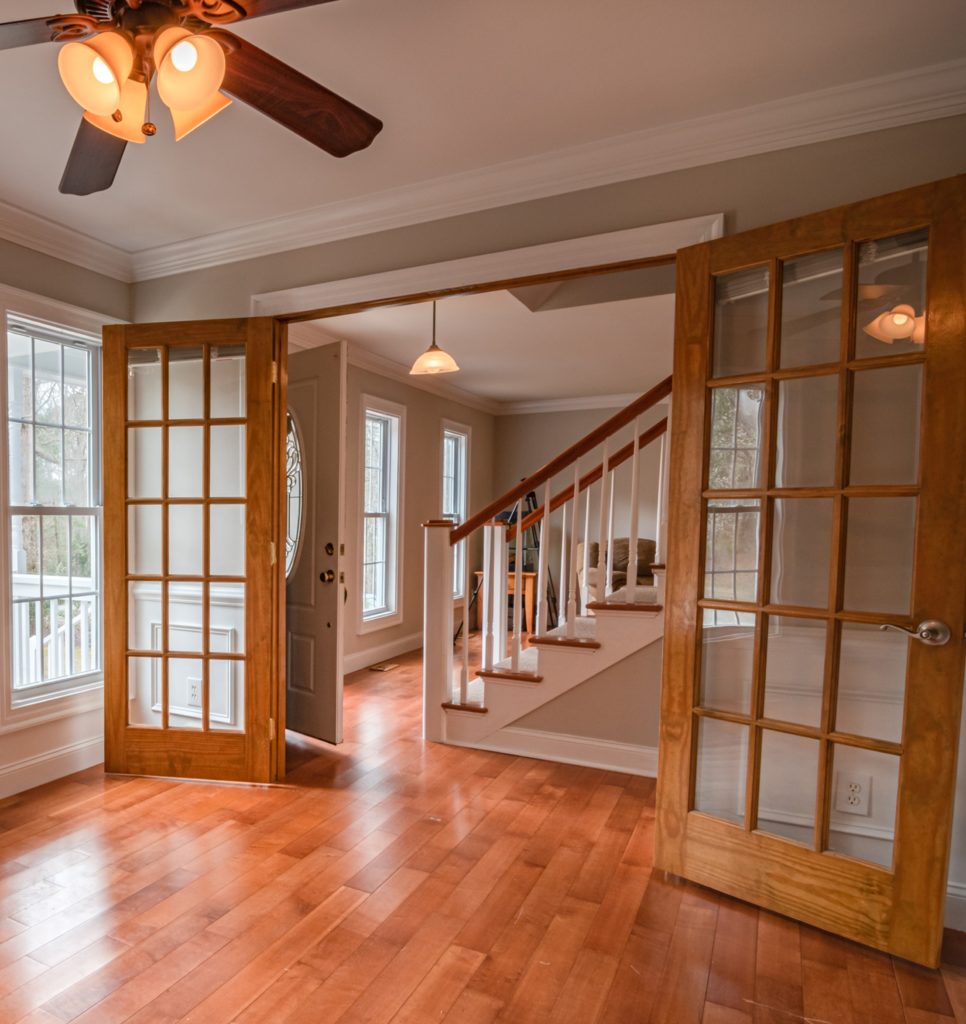Cost per square foot. Simple to calculate. Seemingly easy to understand. Until you realize what was included in the “cost” differs by builder!
On floor plans, dashed (as opposed to solid) lines often indicate options. In keeping with its focus on affordability, the Rivera Farm (plan #29391) presents several optional design amenities – dashes indicate the option of having transom windows in the entry/along the staircase as well as the option of a fireplace in the family room. And behind the dining area, an optional patio. Photos or renderings may show these amenities, but being options, likely they were not included in the cost that was used to come up with cost per square foot.
Similarly, floor plans may show alternate layouts for the same space. The base Jolene (plan #42334) shows three bedrooms, but also shows re-purposing Bedroom 3 as an office. The addition of stunning French Doors into the office could add thousands of dollars to the price of your home, increasing its cost per square foot.
Sometimes home builders will make purely aesthetic amenities shown on floor plans extra-cost options. Continuing with the Jolene plan there is a boxed ceiling in the owner’s bedroom – that might add $1,000. Ditto with the ceiling detail in the front entry. It adds drama and calls attention to this wider-than-expected space, but it adds cost, which increases cost per square foot.
Unless mandated by codes, builders can elect to build with either 2×4-inch or 2×6-inch exterior walls. Total square footage of the home will be identical, homes built with the 2×4-inch walls will have slightly larger interior rooms. Due to their added insulation, the homes with 2×6-inch walls, will usually be more expensive and therefore have a higher cost per square foot, but will also keep utility costs down and your home more comfortable.
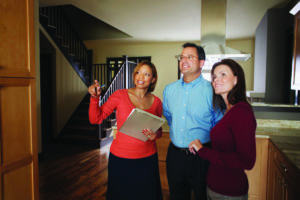
Laminate or stone – what countertop material was included in the cost? Are appliances included? If so, which ones? There’s room for a sink in the laundry room. Was that included? Even if you take the same set of house plans to different home builders, the prices won’t necessarily be comparable. You specify Bruce® Hickory wood floors. Builder A figures the price based on solid wood and Builder B’s pricing was based on engineered wood.
From flooring to lighting to plumbing fixtures and trim work, as you tour most model homes, there are various upgrades shown that are above and beyond the base price used to calculate cost per square foot. It’s the same way in the auto industry. As advertised, the 2020 Lexus ES 350 starts at $39,900. That’s $10.93 per pound. But the ES 350 often tips the scales around $50,000 including options makes it $13.70 per pound.
You wouldn’t compare new cars on the basis of cost per pound. Why use cost per square foot to compare new homes, especially when it’s almost impossible to get an “apples for apples” comparison?
Next time: How building lots impact your cost per square foot.
For more resources on thoughtful design and products:
- View other articles on our blog
- Browse our Her Home™ Magazine
- Thoughtful Design Concepts
French Doors Photo by Curtis Adams from Pexels
Cover Image: <a href=’https://www.freepik.com/free-photos-vectors/sale’>Sale photo created by freepik – www.freepik.com</a>

